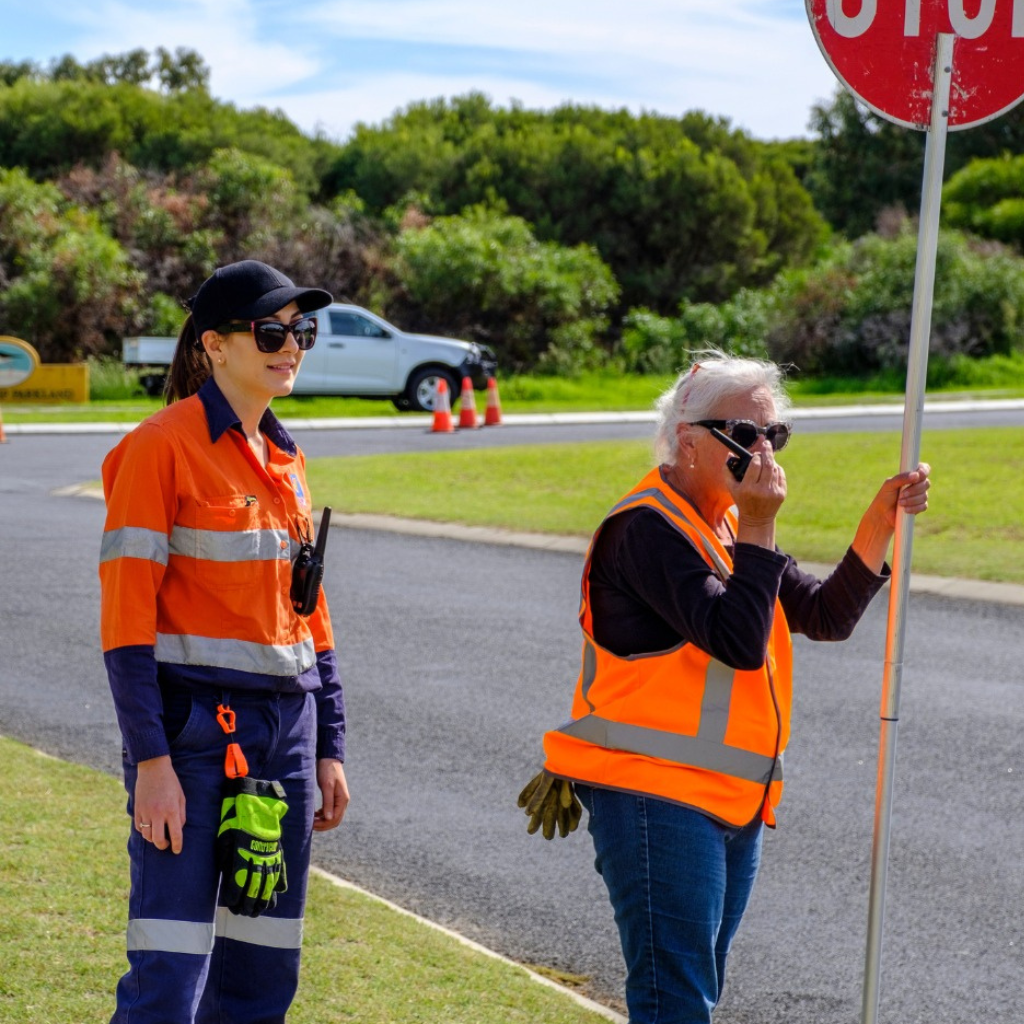Tapers, also known as channelising devices or temporary traffic barriers, are an essential component of temporary traffic management during lane closures. They are used to guide traffic through a construction zone or closed lane, and to separate opposing traffic flows. They are designed to minimise the impact of lane closures on the surrounding road network and to ensure the safety and efficiency of road users.
Tapers are an important tool for traffic controllers to manage the flow of traffic and reduce the risk of accidents and congestion. They are an essential part of any traffic management plan and play a critical role in ensuring the safety of both the road workers and the road users.
Tapers are generally placed at the start of a lane closure and gradually decrease in width or height as they approach the work zone. This creates a visual cue for drivers to merge into the open lane safely, as well as to separate traffic that is entering and exiting the closed lane.
There are several types of tapers that are commonly used in traffic management, including:
Pavement Markings: These are markings that are placed on the road to guide traffic through a lane closure.
Temporary Traffic Barriers: These are barriers that are placed on the road to separate opposing traffic flows and to guide traffic through a lane closure.
Chicane Taper: A chicane is a type of taper that is used to guide traffic through a lane closure by creating a zigzag pattern. Chicanes are typically used to slow down traffic and to reduce the risk of accidents by forcing drivers to make multiple turns, rather than allowing them to continue straight through the lane closure.
V Taper: A V-taper is a type of taper that is used to guide traffic through a lane closure by creating a V-shaped pattern. V-tapers are typically used to slow down traffic and to reduce the risk of accidents by forcing drivers to make a turn, rather than allowing them to continue straight through the lane closure.
Installing and Maintaining Tapers
The process of installing and maintaining tapers involves several steps, including:
- Planning: Before installing tapers, a traffic management plan must be developed to identify the specific needs of the lane closure, such as the type and length of the closure, the expected volume of traffic, and the layout of the surrounding road network. Planning shall also determine the best-suited times to undertake to implement traffic management and may include timing restrictions.
- Placement: Tapers should be placed in a way that guides traffic through the lane closure and separates opposing traffic flows. The placement of tapers should be in accordance with the latest standards and guidelines set out by Main Roads Western Australia and including Austroads Guides of Temporary Traffic Management (AGTTM).
- Installation: Tapers can be installed either manually or by using specialised equipment. It’s important to ensure that the tapers are securely anchored in place and that they are visible and easy to navigate for road users.
- Inspection: Tapers should be regularly inspected to ensure that they are in good condition and that they are still providing effective guidance for road users. Any damage or wear should be identified and repaired or replaced as necessary.
- Maintenance: Tapers require regular maintenance to ensure they remain in good condition. This includes cleaning, repainting, or replacing damaged or worn devices as necessary.
- Removal: Tapers should be removed as soon as they are no longer needed, at the end of the lane closure or when the construction is completed.
Proper placement and regular inspection and maintenance of tapers are essential to ensure their effectiveness and safety. Tapers that are not properly placed or maintained can become hazards themselves, creating confusion for road users and increasing the risk of accidents.
Summary
Tapers play a critical role in traffic management during lane closures. They are essential tools for traffic controllers to manage the flow of traffic and reduce the risk of accidents and congestion. The proper use of tapers, in accordance with the latest standards and guidelines set out by Main Roads Western Australia, can ensure the safety of both the road workers and the road users. It’s important to understand the different types of tapers available and to select the appropriate taper for each situation. Additionally, regular inspection, maintenance and proper placement of tapers are essential to ensure their effectiveness and safety. By mastering the art of taper techniques, traffic management during lane closures can be executed efficiently and safely, keeping traffic moving and reducing the impact on the surrounding road network.
Do you need training?
AusQ Training offer a range of courses to assist you in the traffic management or construction industry, in Bunbury, Perth and all over WA – to view our range of public training courses [click here] or view our calendar here.
Make a time to chat to one of our Customer Support Team members [here] to discuss your traffic management training needs.


